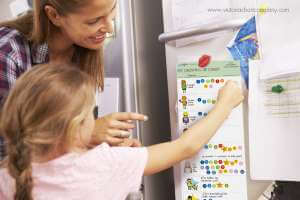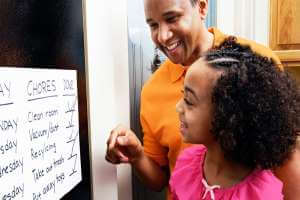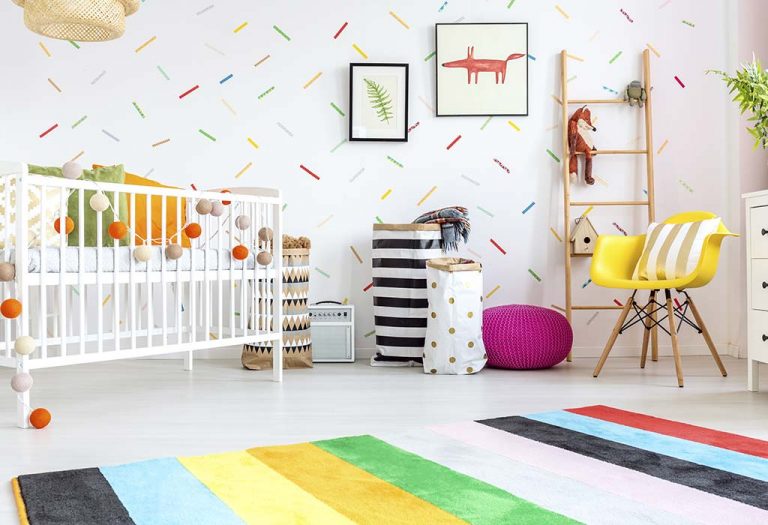Behavior charts are a copy children Written goals with measurable progress made on them, similar to the way adults use written goals to get things done.

Behavior charts can be a great tool for visualizing what you expect from your child and how they've lived up to it. If you're considering creating one for your child, this article contains everything you need to know about behavior modification charts.
Do you need: TikTok app, is it safe for children - a guide for parents to protect children
What are behavior charts for children?
Behavior charts can be really useful tools for parents and teachers who need to motivate children who struggle with certain responsibilities or behaviors.
They are usually used between the ages of 2 and 10 and can be as simple as a chart with stickers stuck on it as a reward for each good behavior.
They can be used to reinforce new skills, remind children to do their homework and chores, and encourage positive behavior in general. Types of Behavior Charts
Most common types of charts
-
Behavior charts with stickers
A sticker chart is an ideal behavior chart for young children as they tend to be large with large colorful stickers posted on them.
Behavior charts work best if you place the chart in a prominent location where others can see and appreciate it. What works best is brightly colored paper associated with the behavior you are trying to instill.
To use a sticker chart, you must identify one important behavior that they should practice. Behavior charts are a visual representation of your child's estimated potential, and stickers are tangible points of appreciation. Give them a sticker each time they demonstrate the desired behavior in areas such as potty training, picking up toys, or making a mess at lunchtime.
It works best with toddlers and older children, as a simple reward is enough to act as a powerful motivator. You can also ask your child to choose the type of stickers that will appear on the chart and which chart material they would like.
Do you need: House rules for children, house rules that every child must follow
-
Chore Charts work with older children.
It's a list of chores they need to complete each day to earn points and rewards. It can help children become more responsible in the long run when they start at an early age.
It can set goals and weekly dates. Each day, when your child completes their chore, they receive a mark for the day and record their progress. On the weekend, they receive a star and a full reward.
The reward can be anything from extra screen time to a movie or something they enjoy. When to Use Chore Charts Chore charts work well with children of all ages.
It's helpful to keep track of how much they work and how much they earn. You also need to make it clear that it's not just about earning bonuses but also about responsibility, but avoid stressing them out about work.
-
Routine behavior charts
A routine is similar to your child's daily schedule. Ideally, their day should be divided into morning, after-school, and evening routines.

The chart should include items such as homework, brushing teeth, getting dressed, picking up after playtime, putting on pajamas for bed, and other tasks you want her to do independently.
This schedule can help children of all ages become more organized and responsible, so you can start early enough that your child can stick to one. A preschool routine chart can include simple items they can manage.
An older child can get more details like when to put away electronics, when to do chores, and when to do homework.
When to use chore charts with all children. For younger children, you can make the chart more engaging by adding pictures to depict the activities and hanging it in their room, perhaps behind a door or in a prominent location. It should be followed daily and checked regularly.
Do you need: a suitable bike for children, measurements and dimensions suitable for the child
-
Weekly behavior charts
A weekly behavior chart is specifically used to build a habit or to work on changing one or more behaviors. It can be anything from "close the front door gently" to "complete homework before bedtime."
Since the chart works on specific behaviors, you need to narrow down the items to one of two and place them in rows on the left.
The columns on the right for each day of the week get a mark or smile each time the desired behavior is repeated.
Weekly behavior charts are used with older children because they can better understand the concept. If they are struggling with behavior, dividing the chart into morning, afternoon, and evening works well.
Behavior Chart Basics:
- Choose only a few behaviors to reward, especially when you're starting out. A simple chart is all you need to get your child used to it. You can create a sticker chart for each behavior as they get older and hang the charts where they belong.
- Choosing a Value Reward: When offering a final reward, be sure to discuss with your child what they would most like to receive. You can also surprise them every now and then based on how well they've performed throughout the month.
- Establish a link between behavior and rewards. Rewards should be consistent with the behaviors being strictly followed. Don't allow lazy people, for example, to get ice cream on the weekend only if they brush their teeth twice a day.
- Create your own chart. Involve your child in the process of drawing charts so they feel invested and responsible for them. Purchase the paper, spend time decorating it, and choose a place to hang it.
- Working to get past the graph and integrate the behavior, try to eliminate the graph and its associated reward mechanism. This helps solidify the learning process and removes the scaffolding to allow it to take root.
Do behavior charts work for children?
Behavior charts work very well in the short term, as evidenced by this preschool behavior chart for kids and the gold stars they aspire to achieve. This is because children love the approval of adults and the praise that comes with a job well done.

However, in the long run, many critics assert that children will not engage in beneficial behavior unless there is something in it for them in the form of a reward.
This happens because whenever they receive a reward for completing a task, they become extrinsically motivated. So, they end up expecting something to pull them or push them toward a goal. On the other hand, intrinsic motivation, which is motivation that comes from within, is developed when they engage in an activity without the expectation of a material reward. Intrinsic motivation has long-term effects on learning, memory, purposeful pursuit, and life satisfaction.
How to Help Your Child Succeed with Behavior Charts
To help your behavior planner work, these are things to keep in mind:
- Set achievable, age-appropriate goals. If you find your child struggling to meet a goal set for them, examine whether the goal is realistic or age-appropriate. If you give your three-year-old a task that would be appropriate for a five-year-old, it shouldn't be a surprise if they fail despite their best efforts.
- Break it down into major milestones. It's best to break a larger goal down into smaller milestones, each with its own reward. If you potty train your four-year-old with a final reward of 30 stars, they'll lose motivation early on. Set ten-star milestones to make the task seem less daunting.
- Place the final reward in the display. If the final reward is a new toy they've wanted for a long time, place it somewhere visible so they can see it every day to keep their motivation high. Choose a spot like the top of the refrigerator or a high shelf they can't reach.
- Using praise as a reward—"Great job, dear!"—rather than an occasional material reward is a good idea. Giving them things all the time can make them dependent on them and cultivate an unpleasant habit.
To know more details, you can watch the following video:
https://www.youtube.com/watch?v=41W2PZfej44
Article source: How to Use Behavior Charts to Motivate Children










